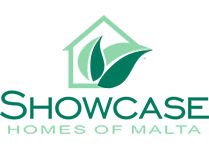How Manufactured Homes Can Keep You and Your Family Safe During a Storm
One of the most common misconceptions about manufactured homes are that they are not safe during storms; however, that is not the case. Manufactured homes are built with the different elements in mind to make sure you and your family stays safe. Manufactured homes are built to meet the construction standards and codes that takes in consideration elemental safety requirements to ensure your home is safe to live in.
According to Richard Jennison, President and CEO of MHI (Manufactured Housing Institute), “The standards for manufactured housing are subject to robust compliance and quality assurance regulations, sometimes more stringent than those for traditional site-built homes. The building materials in today’s manufactured home are the same as those used in site-built homes. The homes are engineered for wind safety based on the geographic region in which they are sold.” If you want to buy a manufactured home, you can rest easy knowing you, your family, and your home will be living somewhere energy efficient and engineered for any potential disasters or threats.
Prior to the building codes, regulations which are required by the Department Housing and Urban Development (also known as the HUD code), manufactured homes were used as a temporary housing for workers, hence why there is a misconception about how safe manufactured homes are. The HUD code was made and are followed by every manufactured home builder, as it is a requirement, including the home building facilities we work with! The HUD code contains the Body and Frame Construction Requirements, which details that builders are required during the building process to inspect and ensure that the manufactured homes are built to withstand any threats. Manufactured homes are so sturdy that, in a 2014 Insurance Institute for Business & Home Safety test, found that modern manufactured homes are sturdier to high winds than site-built homes.
Proper installation is extremely important for maximum amount of safety, including additional structures and inspections from the homeowner. The structure can include the following: an awning, deck, carport, or even a sunroom.





